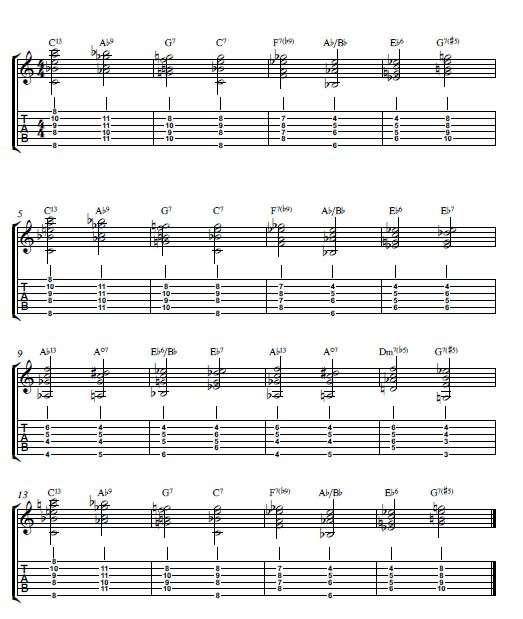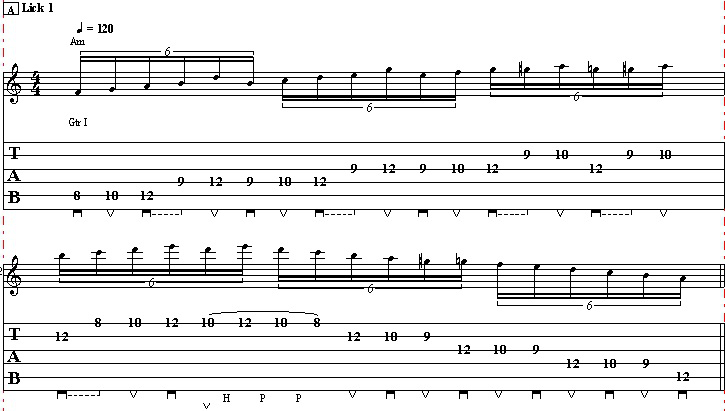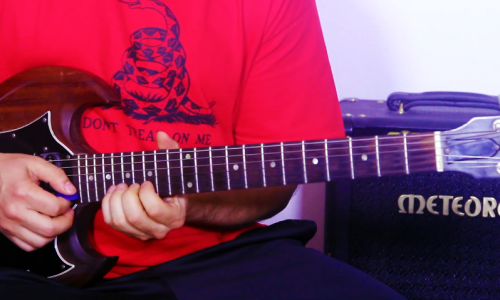Check out this Slow Blues Guitar Lesson on How to Play “Gee Baby, Ain’t I Good to You” by Kenny Burrell.

Hey, how’s it going this is Jon McLennan with Guitar Control, I hope you’re doing fantastic, today I’m bringing you this video lesson on a Classic Slow Blues called “Gee Baby ain’t I Good to You” by Kenny Burrel. I love playing this song on gigs. I’m going to break down the different sections and show you how Kenny Burrell does it. There’s a lot of good jazz voicing’s that I wrote out so be sure to check the image above to follow the chords and tabs for Gee Baby, Ain’t I Good to You by Kenny Burrell.
Gee Baby, Ain’t I Good to You
Well let’s zoom in and get started, so for the first part of Gee Baby, Ain’t I Good to You by Kenny Burrell, I’m going to show you some stock chord voicing you can use that are basically from Kenny Burrell version of “Midnight Blue”, you can also use these as a great source to play chord melody as well. A lot of the voicing that I’m going to show you have the melody note in the lead, so I’m starting out on a c13 and I’ve got the eighth fret, then skip a string, eighth fret, ninth fret, tenth fret, and eighth fret. It’s a c13 chord and uses my thumb a lot.
This stuff that I picked up from Kenny Burrell that he showed me, c13 and a flat 9 is the next chord that’s 11, 10, 11, and 11, then I go to g7 which is 10, 9, 10, 8, pretty stock chord back to a c7 with my thumb, and eight skip a string, eight, nine, and eight. So if I were to go over the first two bars, remember that each chord gets two beats one, two, three, four, one, two, three, four, okay two, four, two, three, four, and then the next four chords I like to use is an f7 flat 9 which is 8, 7, 8, 7, f, a, e flat, g flat, to an a flat triad, with a b flat in the base, this is one of my favorite chords having a major triad, and use my thumb again to get that root.
If you don’t want to use your thumb, you can play it like this six, six, five, four, but it sounds better this way, and then e flat six which I play with just three fingers but I’m kind of double stopping these two notes so I’ve got six, five, five, four, and then g7 sharp five which is ten, nine, eight, eight, like a T-Bone Walker chord or something you might hear like “Stormy Monday”, so two, three, four, two, three, four, f seven flat nine, a flat over b flat, e flat six, g seven sharp five, then repeats again.
Now the second time that e flat six becomes an e flat seven and leads us into the next section, but before we go there I just kind of walked a little baseline over the chords of the a section and see if we can repeat and practice Gee Baby, Ain’t I Good to You by Kenny Burrell together.
You can either do a half note one, two, three, four, one, two, on each chord or you could do a quarter notes or mix it up. You’ll see I might mix in a few things let’s give it a try. You can also arpeggiate or put a backbeat thing, back to simple and then get into the ace or a section, then on the b section, we get an e flat six to an e flat seven, then we go to a flat 13 which is just like the first chord in Gee Baby, Ain’t I Good to You by Kenny Burrell. I’ve just relocated the fourth fret so four, four, five, six, a flat thirteen, then a diminished seven which is five skip a string, four, five, four, to e flat six. This time with a b flat in the bass, so it’s basically like the chord we had before but moving the bass note to the sixth string, then e flat seven back to a flat 13, a diminished again and this time a 2, 5, 1, takes us back home to the a section, so the way I play that is five, six, five, six, d minor seven flat five, to g seven sharp five which is basically three skip a string three, four, then back to the melody a section.
Let’s see if we can go through the a section of Gee Baby, Ain’t I Good to You by Kenny Burrell, we’re going to play it into the b section so it goes a, a, b, a, basically we go two, three, four, back to the a and you’re back to the top. Remember it takes time to get good at playing jazz so let’s try those changes now with more of a chord melody approach so once you get those chords sounding clean you can try and add the melody with those chords which is a little bit harder, but it sounds really cool and the idea is that I’m going to harmonize the melody and then harmonize those chord shapes.
If I start from the beginning, I’m going to play the first two bars of Gee Baby, Ain’t I Good to You, I’ve got that c13 chord we just learned and I’m going to bring out that top melody because here’s the melody of that top note. I’m going to play eight; nine put the chord down a flat nine, and then play on the third string a10, g seven, play that top string that second string then do the c7 chord.
Embellish the melody a little bit, make it slide in the chord, like then get to that f7 flat 9, and six or seven, six, eight, then play that a flat with a b flat in the bass, and then e flat six so. It fits into what we have learned; now you can bring out the melody and do it again.
I really hope you get inspired from Gee Baby, Ain’t I Good to You by Kenny Burrell to keep playing and keep practicing. Make sure to subscribe on our You Tube Channel and we’ll see you in our next video lessons, thanks for watching How To Play Gee Baby, Ain’t I Good to You by Kenny Burrell.



